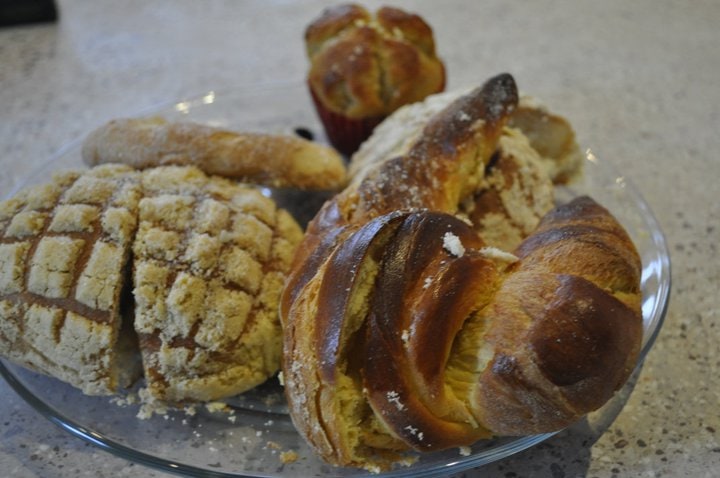
Kids, pan dulce and oranges in San Miguel de Allende
“VERDE!” I scream as 10 young kids with brown-black hair run toward me. “ROJO!” I scream just seconds later, which brings their feet to an awkward halt where their restless legs have trouble stopping. The boys and girls push each other with playful rivalry. “VERDE!” They sprint faster and laugh uncontrollably as they get closer. “ROJO!” The kids try to stop themselves from inching forward as they are expected to stay in whatever spot they stopped until they hear the next command. “VERDE!” The front-runners get closer and closer until I have to scream “ROJO, ROJO, ROJO!” three times as the winner reaches me and hits my knees in a fit of joy. The children of Colonia Obraje love to play ‘red light, green light.’ A dirty, stray dog follows the children wherever they run.
In the Central Mexican town of San Miguel de Allende, the euphony of young kids playing and laughing echoes throughout the cement-paved streets of Colonia Obraje. The neighborhood is historically known as where much of the working class families live, and their children are the heart of the colonia.
When I visited this town in Guanajuato state last year, I stayed in Colonia Obraje for one week. I traveled with other art students from Humboldt State University and our photography professor, Don Anton.
Just walking distance from the colonia is El Jardin, the town’s central square. Trees surround wrought-iron benches and vendors sell everything from cold horchata to marionette puppets on the street. Mariachi music can be heard both day and night and the local shoe-shiner sets up shop across the street from the town’s Starbucks Coffee where handmade dolls are sold outside.
The iconic focus of El Jardin is La Parroquia church on the south side of the town square. The inside of the church is beautiful, but the focal point remains the outside where gothic-style architecture dons the exterior of the building. The golden-blonde pillars tower over every other building around town.
I found that spending time together at El Jardin and paying respect to La Parroquia was not just for tourists getting their fill of a colonial Mexican town, but it was also a daily tradition for locals. More vendors stake out to sell even more handmade dolls and beaded jewelry. Friends and lovers gather at cafes around the square. Families sit together as their children run and play games around the gazebo. People known as beggers to the community often sit cross-legged on the hard pavement and hold a hand out, palm up. Once in a while, someone will place a peso in their outstretched hand.

The best tacos I had in San Miguel came from a taco truck where they put pineapple on everything I ordered. Although the best food I will remember from my time in this town is not a taco or even a dinner meal at all. I will remember the pan dulce and the oranges.
The pan dulce was from La Colmena, which means ‘the beehive.’ The panaderia is on a street called Relox, which is unmistakable once you find the plethora of blue doors. The street itself is famous for its affinity for blue doors and the best pan mexicano I have ever had. It was fresh from that morning we bought it. It was so sweet and hearty that eating it was more of a ritual in honor of something special. The panaderia has been in the same family for three generations and it is known as one of the oldest businesses in town.
 The oranges – or naranjas – came from a grocery stand next to the mercado de artensanias, where there is blocks and blocks of vendors selling art and copious amounts of gifts to buy. With the sweetest and juiciest oranges I have ever had, the groceries by the mercado are the best stop for fruit by el jardin.
The oranges – or naranjas – came from a grocery stand next to the mercado de artensanias, where there is blocks and blocks of vendors selling art and copious amounts of gifts to buy. With the sweetest and juiciest oranges I have ever had, the groceries by the mercado are the best stop for fruit by el jardin.
Outside the blocks of mercados and groceries are also elderly women sitting on the pavement – selling tortillas – again their hands outstretched and palms up; their wrinkles telling a story to passerby.



Leave a Reply